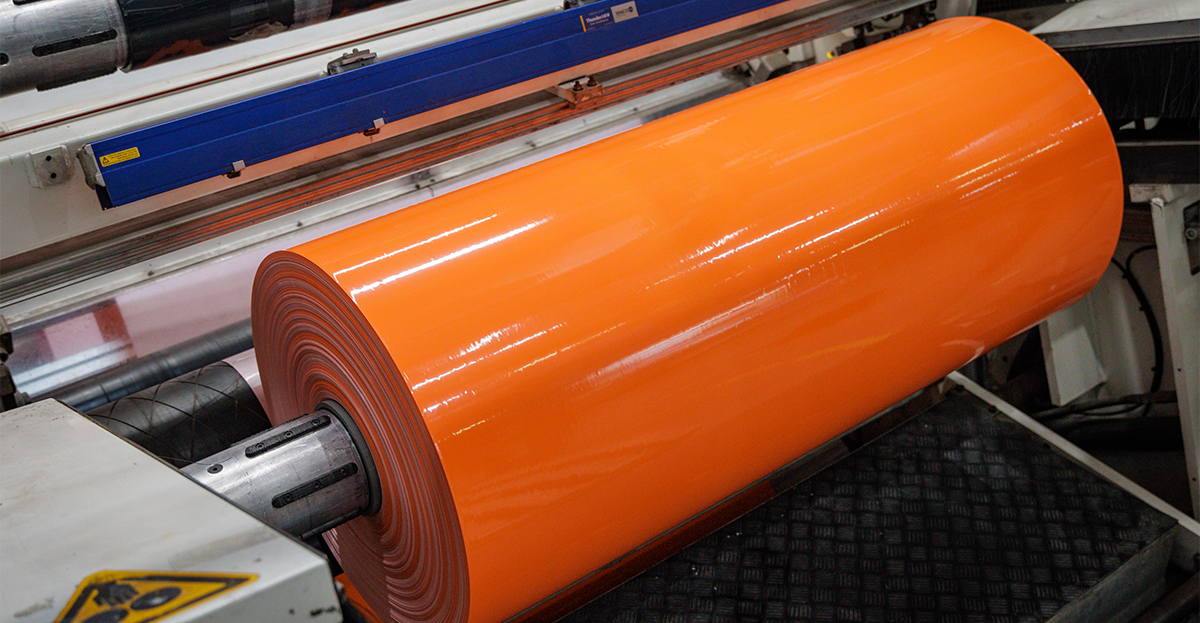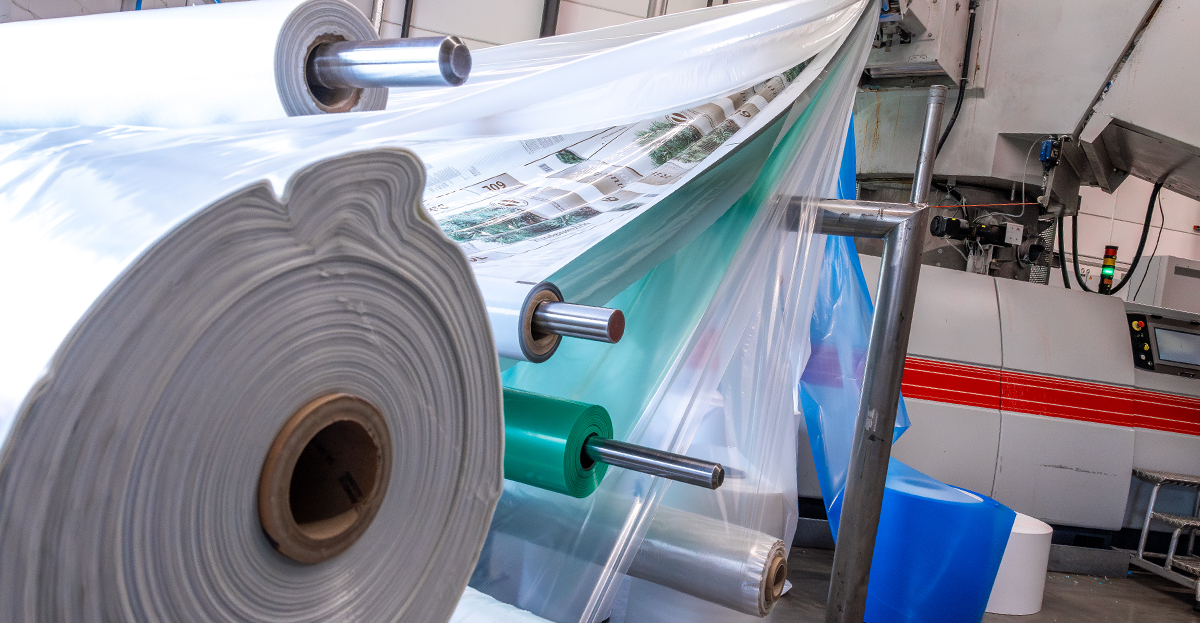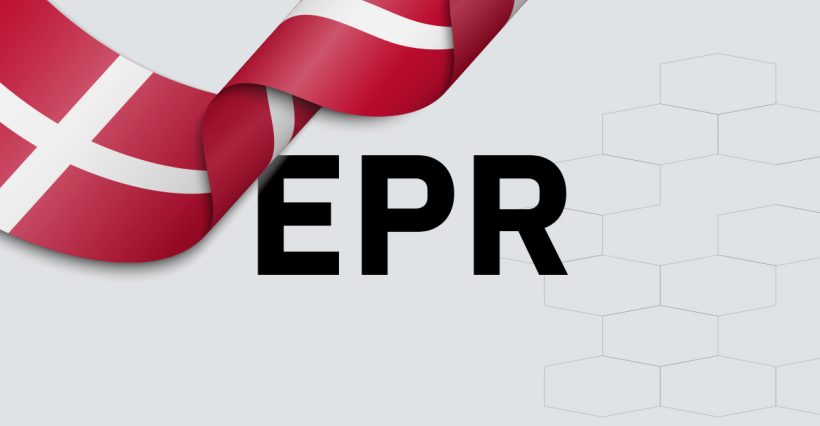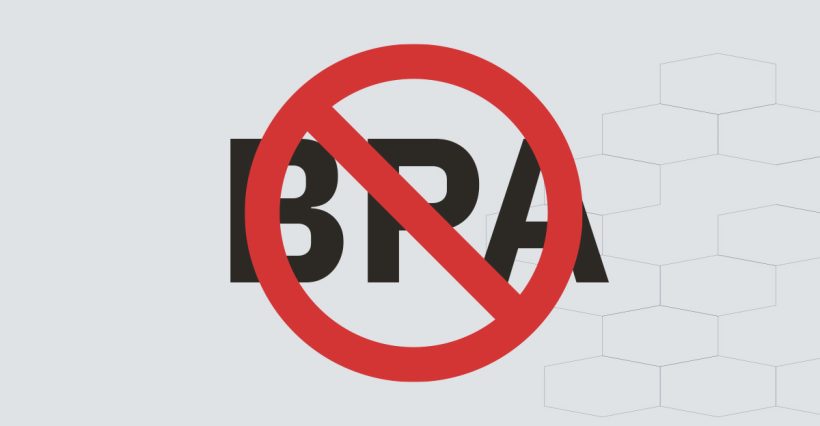LDPE stands for Low Density Polyethylene, also called Low-Density Polyethylene in English. Many users and producers still refer to ethylene instead of ethylene.
Polythene is formed by polymerisation of ethylene (poly means "many"; literally, therefore, many-ethene). Ethylene is obtained by cracking a light derivative of petroleum, such as naphtha.
The low density of LDPE results from carrying out the polymerisation process under high pressure, creating molecules with many side branches. These side branches lower the degree of crystallisation, meaning that the molecules do not lie tightly together due to their irregular shape. This causes fewer molecules to fit in the same space, resulting in a lower density of the material.
We see a good example of this effect with water and ice. Ice, being in a more crystallised state, is lighter than water.
LDPE is a thermoplastic, a type of plastic that softens when heated, unlike rubber, for example. This allows LDPE to be easily reused and moulded into other shapes after heating.
Production of LDPE film
LDPE film is produced by extrusion, a process in which plastic material is melted and pressed through a mould to obtain the desired shape. This process results in thin, flexible sheets or films that are widely used for packaging.
The production of LDPE film consists of the following steps:
- Polymerisation: Ethylene monomer is converted into LDPE under low pressure and temperature by a radical polymerisation reaction.
- Extrusion: The LDPE polymer is melted and pressed through an extruder to make thin films.
- Cooling down: The film is quickly cooled and wrapped on rolls, creating the final product.

Applications of LDPE film at KIVO
LDPE film is a versatile material that KIVO uses in various packaging solutions due to its flexibility and excellent barrier functions. The main applications of LDPE film within our range are:
- Automatic packaging of frozen fruit and vegetables
KIVO offers LDPE film for automatic packaging of frozen fruit and vegetables. This so-called FFS films are ideal for use in form-fill-seal (FFS) machines, which provide fast and efficient packaging of bagged products. The film protects the contents from moisture, dirt and other external influences, preserving product quality during storage and transport.
- Collation Shrink Film
KIVO offers shrink film suitable for packaging various products. This film is ideal for automatic packaging of consumer goods and multiple products in bundles, for example. When the film is heated, it shrinks around the product, creating a tough, protective layer that fits perfectly to the product. Shrink film is widely used in the food sector, non-food products and for retail packaging.
- Pocket goods
At KIVO, we manufacture bagged goods in the form of refuse sacks, rubbish bags and collection bags for both domestic and industrial use. These LDPE bags are strong and durable, with excellent protective properties against dirt and moisture. The bags are used for storing and transporting various materials, from rubbish to building materials and vegetable waste.
- Covers
KIVO offers LDPE sleeves suitable for the protection of various products such as textiles for at laundries. These covers not only provide protection against dirt and damage, but also ensure that products remain visible to consumers. Our dry cleaning covers are designed to package products safely for transport, storage or presentation at the destination.
- Bread bags (Bagloaders)
For the bakery sector, KIVO offers bread bags that are ideal for packaging bread and other bakery products. The bag loaders are designed for automatic packaging, ensuring efficiency and speed in the production environment. The LDPE bags we produce offer excellent air and moisture barriers, preserving product freshness.
Tailor-made solutions
KIVO supplies LDPE films for various applications, from packaging for consumer goods to technical films for automatic processing on machines, all tailored to specific customer needs.
Advantages of LDPE (film)
- Strength and flexibility
LDPE is a tough plastic with many side branches in its molecular structure. This gives the material a soft texture, but at the same time it offers high tensile strength and tear resistance. This combination makes LDPE film particularly suitable for packaging solutions where both flexibility and toughness are important, such as shrink wrap and stretch films.
- Water-repellent and chemical-resistant
Thanks to its hydrophobic properties, LDPE offers excellent protection against moisture and other liquids. This makes it ideal for applications where water resistance is required, such as when packaging building materials or garden products like potting soil. In addition, the material is resistant to a wide range of chemicals, including acids, bases and oils, contributing to its versatility.
- Suitable for the food industry
LDPE is safe for direct food contact, which makes it perfect for applications in the food industry. It is often used for packaging such as freezer bags, cling film and bakery packaging, where hygiene and food safety are crucial.
- Thermal properties
The molecular structure of LDPE makes it very suitable for applications such as shrink wrap. Whereas other types of polyethylene shrink mainly lengthwise when heated, LDPE can also shrink widthwise due to its side branches. This ensures an optimal and uniform fit around products, which is essential when packing, for example, pallets or bundles.
- More environmentally friendly than many alternatives
A major advantage of LDPE is that less material is needed to make a sturdy packaging. This leads to less use of raw materials, lower energy consumption during production and a smaller carbon footprint. Moreover, the light weight contributes to more efficient transport processes, further reducing environmental impact.
- Recycling LDPE film
LDPE film is highly recyclable, if collected and processed correctly. Recycled LDPE (PCR: Post-Consumer Recycled) can be used to produce new films or other plastic products, such as rubbish bags or construction films. This makes LDPE a circular material that helps reduce plastic waste and contribute to a more sustainable packaging chain.

Questions following this article?
Feel free to contact one of our staff using the contact form below. We will respond as soon as possible.



